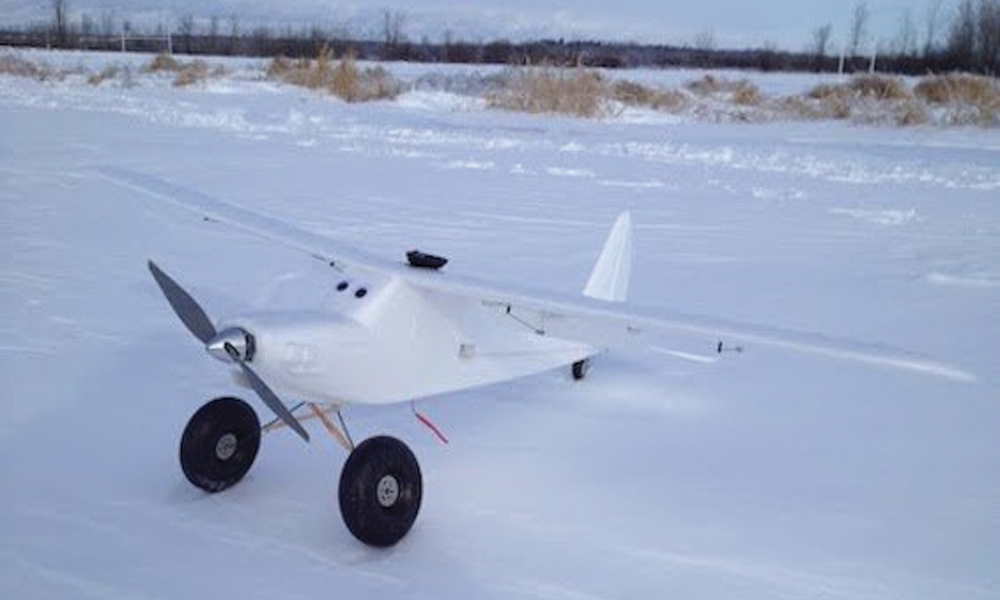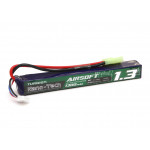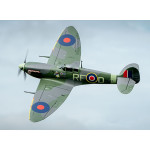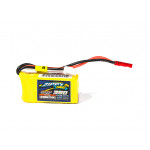
There is a saying here in Canada. We have the best restored classic cars.
Why? Because we can work on them for 6 months of the year. The winter of 2016/2017 will be no exception. To think this time last year I actually had to put wheels back on a few of my planes because we had no snow. Yep, we're talking about winter flying and some of the considerations you want to make before you expose your kit to the elements.  Honestly flying in the winter is not all that bad but things can go wrong quickly if you are unprepared for the cold. Here are a few tips I've learned over time.
Honestly flying in the winter is not all that bad but things can go wrong quickly if you are unprepared for the cold. Here are a few tips I've learned over time.
- Leave the hand-launched birds at home. A couple of years ago I damaged my beloved EFX Racer and gave myself frostbite. The launch and flight went well but when it came time to land, my hands were too numb and I nosed the plane over into the hard ice and broke a motor. Leaving the hand-launched planes at home really is only warranted during those extremely cold days but if there is a chance your hands will become too numb, you are safer to fly with a transmitter mitt and use planes that can launch/land on the snow. (Or hope someone can assist with a hand launch.)
- Second - Have 2 sets of gloves. When I fly I tend to wear a set of thinner gloves, even if I'm using a transmitter mitt. They offer protection from the cold without being too bulky to fly with. That said you have to be aware of how long you can fly before your fingers get too cold. Once I’ve landed the plane, I switch over to my thicker pair of gloves and always give my hands/body a chance to warm up after a flight. Often you are stationary for 5-10 minutes and suddenly discover your toes and fingers are getting too cold. Keep moving around.
- Buy a good transmitter mitt
- It protects my hands from the cold/wind while I'm flying.
- I can safely set my remote down in the snow and not worry about it getting wet.
- If it starts to snows it is no big deal. Hands and radio are protected.
- Keep it simple. Be selective with your planes. One of the things I realized when flying during the winter, especially with a transmitter mitt on, is that you are a little more restricted with hand movements. I tend to go with a more conservative approach with the planes. I already have my radio set up so the rates and flaps toggles are all the same location and really those are the only 2 switches I have to throw during a flight.
- Less is more Generally, I expect my flights to be shorter in the winter. Less punishment on the batteries, planes, and fingers. I usually shorten the flight anywhere from 1-2 minutes and often spend the last minute practicing my final approach. Conditions change rapidly and keeping your fingers nimble vs numb is a good thing.
- All about the power
- There are many options in the marketplace and even some awesome DIY ideas. I like using the transmitter mitt for 3 main reasons.
- Pay attention to your packs, especially the transmitter. For my flight packs, I transport them in a soft foam cooler. They rest in a hard plastic container and on extremely cold days I will heat a gel pack and put that in case to help keep the ambient temperature at a more acceptable level. Expect less punch from your batteries. They do warm up in flight but be aware of the potential you might not get the power you are expecting. If I'm going for back to back flights I often will keep the next battery inside my jacket so it stays warm and I frequently check the cell counts after a flight to see if I'm pushing them too hard.
- Dry them off One of the nice things about winter flying is unless you dunk the plane in a snowbank, in general, don't get too wet. I like to keep the planes outside until I'm ready to leave the field. Knock/shaking all the snow off before loading up. When I get home I always inspect the internal bay for any dampness and set the planes up to dry. After many years of winter flying, with a few good crashes, I've never seen any ill effects of winter flying.
- Just do it. Have fun but be safe. There is no reason not to enjoy flying during the winter. If the conditions are right go for it, just taking the necessary steps to protect yourself and your kit. Always take into account the wind chill. The biggest thing you need to guard against is frostbite and exposure, so watch out for yourself and your flying buddies. Remember we do this for fun right.
What do I fly?
 I prefer tail draggers with skis but tricycle planes can handle the snow just as well. Check out HobbyKing or your local hobby store for ski options and give winter flying a chance. Even hand toss planes work well but are mindful of exposure or ask someone to launch for you.
I prefer tail draggers with skis but tricycle planes can handle the snow just as well. Check out HobbyKing or your local hobby store for ski options and give winter flying a chance. Even hand toss planes work well but are mindful of exposure or ask someone to launch for you.
Currently, my winter fleet consists of the following:
Durafly Tundra, Durafly Skymule, HobbyKing Skipper, Multiplex FunCub, E-Flite Pawnee, FliteTest Sea Duck, FliteTest Sea Otter, and a ParkZone Corsair. I'm trying to decide which plane will get the FPV treatment otherwise when the weather is nicer I do fly FPV with my wings or the Bixler 2. In the comments box below, tell me what planes you fly in the winter and what are some of your other tips and tricks. Happy Flying! Written by Andre
Hear it First: Join our Mailing List
Sign up to receive new product updates, exclusive discounts, news, and more!








